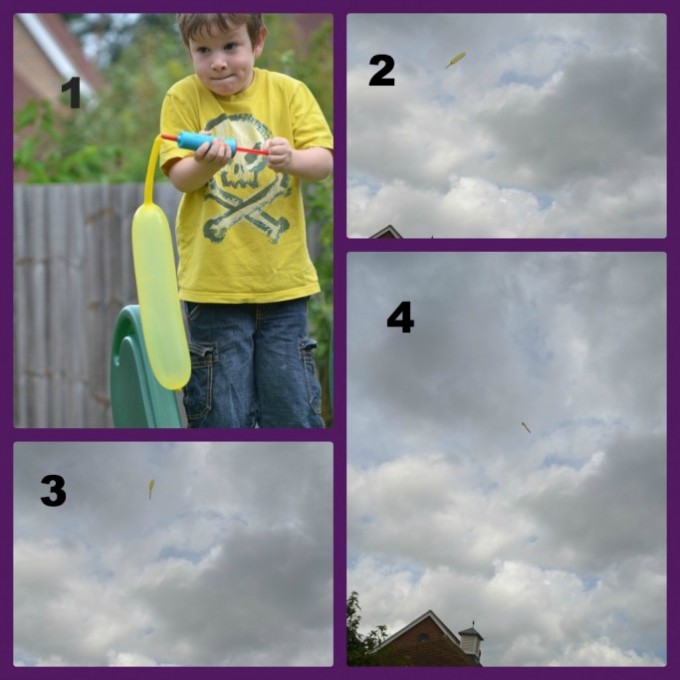Have you wondered why balloons make a funny noise when you let them go? Have you also noticed how they move fairly gracefully in circles, then right at the end shoots super fast (usually landing on a bookshelf, light or daddy’s head)?
Today we experimented by blowing up a long balloon and letting it loose in the garden.
The kids couldn’t believe how high the ballon rose in the sky and how much noise it made!
Why do these things happen?
The neck of the balloon is very tight. The air slips through it slowly, bit by bit. When we looked at it, the neck seemed to flap open and closed. We think this is why it’s noisy.
It moves because the balloon is a big piece of elastic. The rubber of the balloon is stretched and wants to go back to its normal size. This forces the air out of the balloon. Air leaving the balloon in one direction exerts a force on the balloon in the opposite direction, the balloon is pushed forward.
The balloon’s flight speeds up at the end because that is the point at which the elastic of the balloon has the most inclination to return to its original shape. Have you noticed when you blow up a balloon that it is hard to get it going and then suddenly get’s easier? The same applies as it returns to its normal size, but in reverse. So at the very end you have that quick shrinking to its original size which makes it surge forward…
Is there a way we can make the balloon go in a straight line?
Can you make a balloon make different noises?
Why does the ballon end seem so wet after a few goes?
Cool huh!
Make sure you check out some of our other fun science experiments for kids.
Last Updated on March 10, 2014 by Emma Vanstone


I know a little boy that would love this.
It is fab isn’t it?
Brilliant! SO MUCH FUN! I do LOVE Science 🙂
Thank you for sharing on Kids Get Crafty!
Maggy
Thank you Maggy!
Why is it after a balloon is deflated so many times that it then can it no longer be inflated? I know a little boy who gets very frustrated by this.
I’ve never had that happen as ours usually burst before then!
Oh, how neat! I love reading the reasons why things happen. Thank you for sharing at Sharing Saturday!!
So glad you liked it!
My boys are so excited to try this experiment. Thanks also for including explanations for some of the questions I know they’ll ask. I love the opportunity to make fun and silly play educational!
Let us know how you get on!
Balloons always make great science in my book. Thanks for linking up to Science Sunday.
Great science fun!
What a great experiment/activity – my girls would have so much fun with this. They adore balloons. I featured it on this week’s Sunday Showcase – thanks for sharing with us! Can’t wait to try it with my girls.